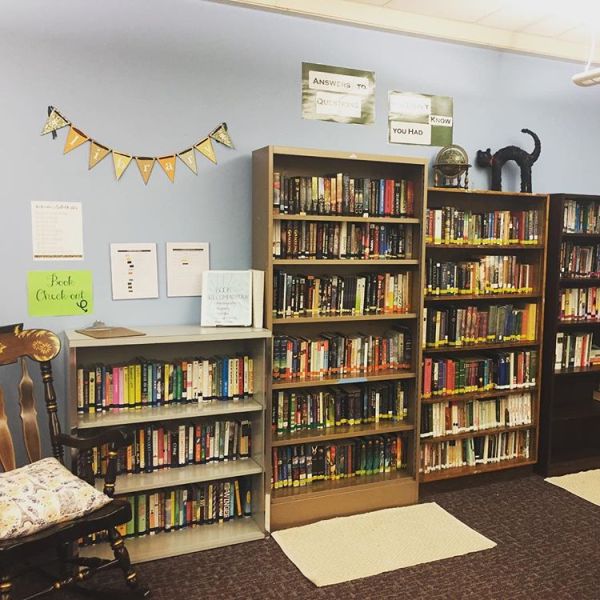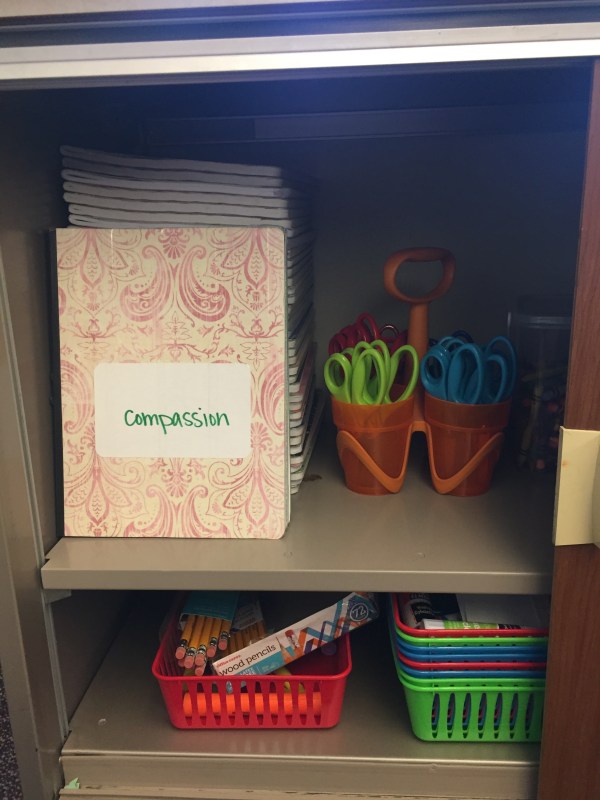“People don’t realize how a man’s whole life can be changed by one book.” -Malcolm X
At the beginning of each year, I spend close to a week talking about independent reading with my students. To me, it’s worth investing the time because independent choice reading is the heart of my class.

How I frame choice reading during the first week:
- discussing how to find a just-right book and how that is different for every reader, different genres and their definitions,
- setting a weekly reading rate (from Penny Kittle’s book Book Love),
- speed dating a variety of books to find potential novels to read,
- going over My Top-15 Reading List (adapted from Kelly Gallagher’s book In the Best Interest of Students),
- discussing how book conferencing works, and how to keep track of books read.
Even though I check in with each student monthly, share my Top 15 List with my classes, and book talk new books bi-monthly, there’s always a small percentage of students who refuse to read, or read very little. My avid readers love the freedom to choose books, but my non-readers, emerging readers, and the reading-is-okay-but-currently-I-have-no-time readers need more of a nudge.
How can I help all students be successful in creating and cultivating a reading habit? How can I help them look forward to diving into their book, to truly enjoy reading? How can I keep up the momentum for those who love to read?
I whole-heartedly believe in the reader’s workshop model, but it is hard.
Keeping track of 150 students all reading different books, and all at different places in their books, requires commitment and organization. It is a daily, conscious decision to sit beside a student and recommend book after book, hoping something sparks an interest, or to try to find a new book for a student who has read 50 books in the last two months and isn’t sure what to read next. (Yes, I have about 10 of these voracious readers each year.) Up and moving around the classroom, talking with kids about books when sometimes all I want to do is sit at my desk and read my book too doesn’t help. (And there are days that I just read alongside students, but it is few and far between.)
While there are times I want to throw in the towel, I am reminded that the hard work pays off. Those tough days are just a bump in the road. Students deserve to be confident readers. They deserve to learn to think critically. They deserve a teacher who will not give up on them.
As a reflective teacher, I’ve been thinking a lot about the reader’s workshop: what worked in my classroom and what I want to make better. These are ideas that I am going to incorporate this fall to build upon the love and joy of reading for all students.
1. Be consistent about my Book Talk Wall and teacher What-to-read-next list.

I have a wall in the back of the classroom where I post the book jacket of every book I book talk. My goal this past year was at least one book a week, usually on a Monday, but I was not consistent. This year I plan to continue book talking books I’ve done in the past, but really play on the books I just read and books that are new.
Which leads to my What-to-Read-Next list. Two years ago, I had on the board these titles  with books: What I just read, What I am currently reading, and What I plan to read next. Next to each phrase I had an arrow and a copy of the book jacket so students could see my book list. I didn’t do that this year because I didn’t have white board space.
with books: What I just read, What I am currently reading, and What I plan to read next. Next to each phrase I had an arrow and a copy of the book jacket so students could see my book list. I didn’t do that this year because I didn’t have white board space.
However, after reading students’ end of the year reflections and seeing if they met their book goals, my students two years ago read more than my students last year. While I don’t think that each group of students should be compared, as each year we have different groups of students, I can’t help but think sharing what I read and talking often about it made a difference. I’ll collect the data on that this year and then draw a conclusion.
2. Student recommendation share outs
 Twice a year, right before Christmas Break and right before school is out, I have students fill out a recommendation form on books they enjoyed and think others might like. It goes in a binder organized by genre. However, students do not share these recommendations prior to turning them in. Why have I not done that? Not sure. It was kind-of like checking something off my to-do list. In this area, I plan to have students share out books they wrote down on that sheet of paper before turning in.
Twice a year, right before Christmas Break and right before school is out, I have students fill out a recommendation form on books they enjoyed and think others might like. It goes in a binder organized by genre. However, students do not share these recommendations prior to turning them in. Why have I not done that? Not sure. It was kind-of like checking something off my to-do list. In this area, I plan to have students share out books they wrote down on that sheet of paper before turning in.
Even though this binder sits on top of one of the bookshelves, SO MANY students didn’t even know it was there. I plan on referencing it often so if students need a book and don’t have one in mind, they can go to the binder and see what others have recommended. (As that was the whole point of this activity anyway.)
3. Theme Topic Books
Penny Kittle has inspired me in so many ways. Six years ago, over the summer, I took 42 composition notebooks (because that was the number of students in each class that upcoming year—yikes!), scrapbooked the covers, and wrote on 3×5 cards the theme topics. (You can find more information about this in her book.) One of my goals was for students to write in them three to four times a year, thinking about how their book connects in some way to the theme topic. And how cool is it for students to see what others have written years prior? However, this past year, they only wrote in it once. My goal is to incorporate this at least once a trimester.

The other goal was if a student wanted to read a book about that theme topic, say compassion, they could look in the notebook and read what books others have read dealing with that topic. However, these notebooks were filed in a cabinet with other supplies. Not an easy way for students to find. So, in this area, I am thinking about a good space to display these topic notebooks so more students can read what others have said.
4. Creation of Book Trailers
I am growing in the area of technology. When I started teaching 16 years ago, I had an overhead projector and a chalkboard. Phones were installed in December, and I couldn’t wait to pick up the phone to call the office instead of pressing the intercom button when I needed something. When we went to white boards a few years later, I jumped up and down. I no longer had chalk marks along the side of my right palm or somewhere on my back. When our school installed projectors, I begged a friend in the history department—as they received a grant for document cameras shortly thereafter—to loan me an extra one so I could teach writing through a step-by-step process. In terms of technology, this is the extent of my expertise. A coworker had to show me how to use Google Classroom last year.
With so many of our students interacting with technology, why not use that to our advantage? There have been some really good book trailers lately. My favorite still is with the novel Salt to the Sea. The music is haunting, which fits the book perfectly. (You can check it out here.)
If I show professional book trailers for students on novels I think they’d like, why can’t they create their own and share on Classroom? Something I plan to look into more and try this next year.
5. Virtual Book Stacks
Students keep track of books they’ve read on a sheet of paper titled My Top 15, but why not have a visual book stack at the end of the year to share and celebrate growth? I thought of a real book stack, as I’ve seen them all over Instagram, but to have students try to find each book they read and stack it up felt daunting to me, especially if students checked out books from the public library and not mine or the school’s library. I plan to use Padlet for students to share their books and maybe even categorize it by their favorites.
If you are interested in more reading on this topic, I suggest the following books:
Nancy Atwell’s The Reading Zone
Carol Jago’s The Book in Question
Donalyn Miller’s The Book Whisperer
Lisa Donohue’s Independent Reading Inside the Box, 2nd Ed.
Penny Kittle’s Book Love
Teri Lesesne’s Reading Ladders
Holly Morningstar Dottarar is an 8th grade English teacher in the Pacific Northwest. While she spent her adolescence as a reluctant reader, once she read The Hobbit—in college—she became hooked. Now, she carries a book wherever she goes. When she’s not reading, teaching, or spending time with her family, she can be found in her kitchen baking. She blogs at www.hollybakes.com and www.hollyteaches.com.








